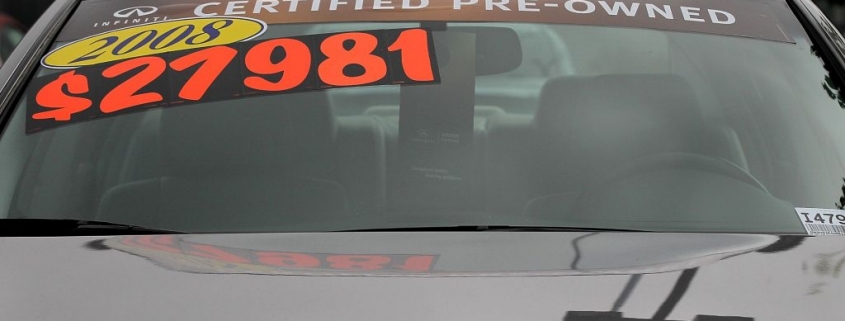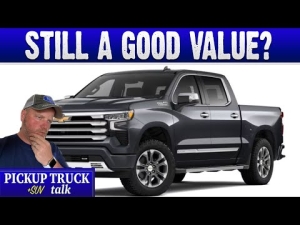What Is the Difference Between MSRP, Sticker Price, and Invoice?
Car shopping can be a stressful matter. A buyer is investing and paying a lot of money for a product. Getting a loan can be stressful, too, if you don’t know exactly where you stand with your credit score. It seems like numbers get thrown around that you can’t even keep track of, and with terms like MSRP, sticker price, and invoice price being talked about, you might find yourself pretty confused by it all. These terms aren’t really interchangeable, so understanding each can help buyers get the best deal when buying a vehicle.
The differences between MSRP, sticker price, and invoice price
Edmunds lays out the differences between the terms.
MSRP stands for “manufacturer’s suggested retail price.” It is exactly what it sounds like. The manufacturer suggests a retail price to dealerships, says Edmunds. Dealerships may or may not price the vehicle at MSRP, but knowing the MSRP before you go in to buy the vehicle gives you a good idea of what you should be expecting to pay.
The sticker price is usually the MSRP, but not always. If you’ve been on a car lot, you’ll see the sticker in the window listing out the standard and optional features, EPA-rated gas mileage, and the price of the vehicle. There will often be any additional pricing from the dealership, like destination charges, for example. Make sure to pay attention to the sticker price and see how much above the MSRP it might be. This might give you some wiggle room for negotiation.
Meanwhile, the invoice price is not something you’ll usually see, but it’s important when pricing a vehicle. The invoice price is the price that the dealership paid for the vehicle directly from the manufacturer. Dealerships have to buy their vehicles first to sell them to individuals and businesses. A dealership has to have that price in mind when negotiating because they can’t lose money on the vehicle. While some negotiation is expected, dealerships cannot sell at a loss or with so little profit that they can’t pay the bills.
Knowing these terms and what they mean will give the car shoppers enough information to negotiate prices and be confident that they are getting a good deal on whatever vehicle they are trying to buy.
How much can you negotiate a vehicle’s price?
Knowing these prices and terms is the first step. You’ll also need to know what you can negotiate. It’s never wrong to ask for a deal, but know that, depending on what you might want to buy, you may not be able to get it.
If it’s a vehicle that’s in-demand or has a lot of hype around its release, then you can expect to pay at least MSRP. For example, the new Ford Bronco has been a highly anticipated release. Therefore, don’t expect negotiations to work, and instead expect to pay what the sticker says for a Bronco.
For other vehicles, though, the MSRP is often the starting point for a negotiation. It never hurts to ask, and most dealerships will want to work with you if you are there to buy.
What else should you know when car shopping?
There’s almost nothing more nerve-wracking than trying to buy a car without knowing your credit score. Have a good idea of your credit score, and do some research about what interest rates you could expect for your particular credit score.
You will also need to know your finances. Set a number for the monthly payment and down payment that you can manage without stressing or stretching your finances and stick to it. If you have an upper limit on what you can pay, then that is it. Don’t go above it, and don’t be talked into paying more.
With just a little extra information, you’ll be able to negotiate a price on your next car confidently.
RELATED: The Devastating Nature of a ‘Buy Here, Pay Here’ Lot You Might Not Know
The post What Is the Difference Between MSRP, Sticker Price, and Invoice? appeared first on MotorBiscuit.







